A place where drama ensues, flavors mingle, recipes are exchanged, and hungry stomachs are satiated; of course, we’re talking about the kitchen! The space where you spend every day cooking, eating, or exploring your culinary skills. And what better way to enrich your favorite space than a classy butcher block countertop?
Kitchens with butcher block countertops not only look visually appealing but also exude timeless charisma with a warm and inviting aura. Families who love experimenting with new recipes or kids who love to climb on the counter and complete their homework while their parents cook will find the butcher block counters perfect for their needs. Want to know more about this wonderful countertop? Read on!
Image source: reimaginestudio
- What Are Butcher Block Countertops?
- Difference Between Wood And Butcher Block Countertops
- Is a Butcher Block Countertop Right for Your Kitchen?
- Cost of a Butcher Block Countertop
- Pros And Cons of Butcher Block Countertops
- How to Install Butcher Block Countertops
- Maintenance And Care for Butcher Block Countertops
- Butcher Block Countertop Uses
- Butcher Block to Amp Your Glam Game!
- FAQs: Clearing Your Doubts About Butcher Block Countertops
What Are Butcher Block Countertops?
Simply put, butcher block countertops are a marvelous and valuable architectural element where functionality gracefully meets style. But wait, there’s more to it.
Back in the 1800s, it was not easy being a butcher. As they worked cleaving meat on sycamore counters, they often found that these counters were prone to splitting due to their cleavers. But in the 1900s, a remarkable discovery made life easier for the butchers.
Individual cuts or planks of hardwood, when glued together, formed a sturdy slab or surface that could endure the butchers’ cleavers. Thus, the incredible, the helpful, and the oh-so-strong butcher block countertop came into existence and changed the history of countertops.
From a meat cutters’ workstation, it slowly made its way to everyday kitchens, and it remains a popular choice. It is made up of tough wood like maple, acacia, bamboo, walnut, or oak; basically, the sturdy wood types that can endure the test of time.
Image source: assirok
Grain Varieties/Design Options
The construction of butch block countertops may not have too many design options as compared to granite, marble, or quartz countertops. However, you can choose the countertop material. Another choice you can make is about the four types of grain variations. Let’s look at them one by one.
- Edge Grain: The edge grain butcher block counter is the cheapest option, where the edges of wooden planks are assembled and glued together to form the counter. Their strength and economical rates have made it a popular choice.
- Face Grain: The face grain butcher block counter is constructed by placing the wooden planks face-up and then gluing them together. Although it’s the most appealing, its durability is the lowest compared to the other two. It is popularly used as a cutting board rather than a full-length counter.
- End Grain: The end grain butcher block counter is a beautiful, mosaic-like one that is constructed using the ends of wooden planks. The small squares make it look like a checkerboard. Although highly durable, its intricate build makes it the most expensive option.
- Blended Grain: The blended grain butcher block counter is made with a blend of finger-joint interior rails and full-length exterior rails. The light and dark wood combination can have color variations, making this counter a shaded one.
Difference Between Wood And Butcher Block Countertops
As butch block counters are made up of wood, people often refer to them as wood countertops. But, of course, they’re different. While you can call all butch block countertops wood countertops, you can’t call them the other way around.
Butcher block counters are made using an assembly of wooden planks. In contrast, traditional wood kitchen countertops use full, solid planks of hard, soft, or engineered wood. But it is the way they are made that makes the butch block counters more sturdy and durable than the traditional wooden ones. Hence their rising popularity.
Is a Butcher Block Countertop Right for Your Kitchen?
Image source: adriennerogerscolor
Whether to install a butch block countertop in your kitchen or not will be entirely up to you. However, suppose you’re thinking of elevating your kitchen with timeless elegance. In that case, a butcher block countertop will be the most practical, cheap, and durable choice. It has a versatile nature, and its durable surface enables it to brave the weariness of the challenging kitchen life.
Its strength and damage resistance are better than that of a granite countertop. Cleaning it is also easier than the other countertops. If these are the things you have in mind while deciding on the counter, look no further. The butcher block countertop is the one that can fulfill all your needs and also give a classy touch to your kitchen.
Your kitchen is also waiting for this delightful and valuable companion. However, if you are still skeptical about it, let’s explore more about this counter so that it’ll be easy for you to decide whether to finalize it or not.
Tip: Remodeling your house? Start with the kitchen! Here is Planner 5D, which has the best AI interior design tools for remodeling or bringing home improvement to the tip of your fingers!
Cost of a Butcher Block Countertop
The butcher block countertop cost can vary based on the type of wood, grain variety, installation, and counter finishing. However, the standard cost ranges between $25 to $65 per square foot. Here are the prices for some of the popular premium types of wood:
- Bamboo butcher block: $72 per square foot
- Maple butcher block: $80 per square foot
- Cherry butcher block: $150 per square foot
- Teak butcher block: $180 per square foot
In addition to the wood type and grain variety, the labor charges to install the butcher block can range between $50 to $70 per square foot. But all things considered, it’s one of the most affordable options when choosing countertops to enhance your kitchen.
Pros And Cons of Butcher Block Countertops
Learning about the pros and cons of any product before you purchase it is a great help in making a decision. So, after filtering through the sawdust, here are all the pros and cons of butcher block countertops we found. Check them out to speed up your decision.
Pros of Butcher Block Countertops:
- The biggest pro of butcher blocks is their affordability. While they aren’t as cheap as laminate countertops, they’re definitely more affordable than stone countertops.
- Butch block counters are versatile as you can choose from edge, face, end, or blend grain options. You can also pick the type of wood from many options: cherry, maple, walnut, oak, bamboo, teak, hickory, etc.
- If you maintain them properly and regularly, butch blocks will show their longevity, as they can last for up to 20 years or longer. They are more likely to outlive the cheaper laminate counters.
- Butch blocks are hassle-free and easy to clean. Just take care of the surface with a sponge dipped in warm water and soap. To get rid of stubborn stains, sprinkle salt over them and clean them with lemon juice as long as they are sealed or finished. Once in a while, you can also disinfect it using vinegar.
- Refinishing or getting rid of nicks, scratches, or burns is very easy for butch blocks. Just sand it!* You can use fine-grit sandpaper and apply food-safe oil over the refinished area.
- Butcher block countertops effortlessly add texture to your kitchen and pair well with the whole design.
- Even if you use a butcher block as a cutting surface, it won’t dull your knives like the stone counters.
*Sanding sealed or finished butcher block countertops is generally unnecessary unless there are deep scratches or significant damage to the finish that needs repair. The protective layer on sealed or finished countertops helps prevent stains and moisture absorption, reducing the need for frequent sanding.
Cons of Butcher Block Countertops:
- Butcher block countertops are prone to scratches, dings, and stains or can be damaged by water. When used as a cutting board, the butch blocks get stained. These stains need to be cleaned immediately, or they can attract germs.
- It is important to properly maintain the butcher block counters by applying food-safe oil every few months, or they can easily dry out.
- With the changing temperatures, butcher blocks may expand and shrink by ⅛ inch. The wood might get cracks if it doesn’t get the space to expand.
- As they aren’t heat resistant, they can easily be scorched.
How to Install Butcher Block Countertops
Image source: freshcutwood
After going through the above details, you might decide to install the butch block counter. After all, the affordability, durability, and longevity are quite tempting, wouldn’t you say?
Installing a butcher block countertop is no easy feat. We recommend that you hire a professional if you don’t have any DIY experience. However, for regular DIYers, this will be an exciting DIY project. Here are the steps to follow:
1. Clear the space by removing the old countertop and sink.
2. Accurately measure the dimensions of the countertop and create a template using thin wood.
3. Cut the butcher block as per the measurements of the template using a circular saw. Don’t forget to make a hole in the counter for the sink.
4. If you have to join two pieces of butcher block, use biscuit joints, miter bolts, or screws.
5. Lay the cutout butcher block countertop on top of the base cabinets to start attaching it.
6. Use L-shaped corner bases, go underneath the base cabinets, and attach the countertop to the wood braces of the cabinets.
7. Lastly, fill the seams of the countertop using a wood filler.
How to Finish Butcher Block Countertops
Upon installation, smoothen the whole butcher block surface with fine-grit sandpaper so that sealing and finishing is easier.
For sealing butcher block countertops, we recommend using food-safe mineral oil. It will close the pores of the surface and provide a glossy finish. It will also provide basic protection from water soaking into the wood. However, it might wear off after time and use. Ensure that you re-apply the mineral oil coat accordingly.
Maintenance And Care for Butcher Block Countertops
Image source: houseofniina
Caring for and maintaining your butcher block regularly will help in its longevity. Cleaning it daily (or on the days you cook) with a sponge dipped in warm water and liquid soap is enough. Once in a while, you can disinfect it with vinegar. The sealing can wear off due to regular usage, so apply the food-safe mineral oil coat monthly.
It is advised not to use butcher block counters as chopping boards, as the knives will scratch and ding them easily, and the food might stain them. To keep them looking new, sand them after every few months, depending on their wear and tear. You can use 150-grit to 220-grit sandpaper for a smooth finish. After sanding, don’t forget to seal them back with mineral oil.
Durability/Lifespan of Butcher Block Countertops
As we have talked about the durability of butch block countertops multiple times before, we would like to stress it again. They can be a part of your beloved kitchen for around 20 years. But, of course, it depends upon the amount of care you shower them with. Regular resurfacing and sealing will definitely boost its lifespan. So, make sure to care for it right!
Butcher Block Countertop Uses
Image source: copremierconstruction
The alluring and sleek butcher block and its durability have made it the go-to choice for kitchen counters or kitchen islands. But its versatile nature allows it to be used in and enhance other parts of your house.
For instance, custom-made butcher block shelves will provide a stylish touch to any space they are installed in. Butcher block counter surfaces are also a giant help on work tables in garages and workshops. They also cast a rustic spell when used in laundry or mudrooms. So, you can explore them in other parts, too, and not just restrict the butcher block counters to the kitchen!
Butcher Block to Amp Your Glam Game!
You should definitely choose a butcher block for your kitchen. The sturdy and reliable countertop will amp up your glam game and be of immense help. Care for it properly, and watch how it becomes the heart of your kitchen for decades to come. Imagine trying a new recipe while the smooth butcher block gently shines up at you. Well, don’t just keep thinking; turn your wishful thinking into reality and opt for the incredible butcher block countertop!
Image source: Becca Tapert
FAQs: Clearing Your Doubts About Butcher Block Countertops
Is Butcher Block Cheaper Than Granite?
Yes, butcher blocks are cheaper than granite countertops. However, the maintenance cost of butcher blocks can be more expensive than the granite ones.
Which Is Better, Butcher Block or Quartz?
Whether butcher block or quartz is better depends upon your personal needs. While the butcher block counters are cheaper than the quartz ones, maintenance of the quartz one is more affordable. Also, quartz is highly customizable. You can pick the one that better suits your needs.
What to Look for When Buying a Butcher Block?
When buying a butcher block, you should think about whether it is the right fit for your kitchen, the grain variety, and the wood type you want within your budget. You should also look at all the pros and cons before buying it.
Are Butcher Block Countertops in Style 2024?
Yes, butcher block countertops are definitely in style in 2024. Their popularity is also likely to continue in the years to come. Their durability, easy-to-clean surface, and environmentally friendly appeal make them a popular choice among homeowners.
Can You Put a Hot Pan on the Butcher Block?
Like all the other types of countertops, it is advised not to put a hot pan on your butcher block. But we know accidents happen. If you place a hot pan on your butcher block counter, causing a scorch, you can sand out the charring.

 Dark Mode
Dark Mode 

 No fees, cancel anytime
No fees, cancel anytime 







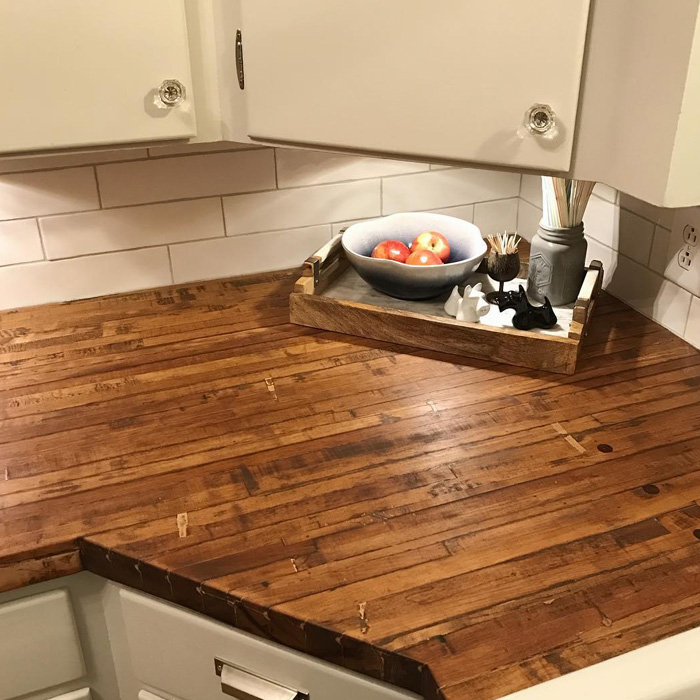
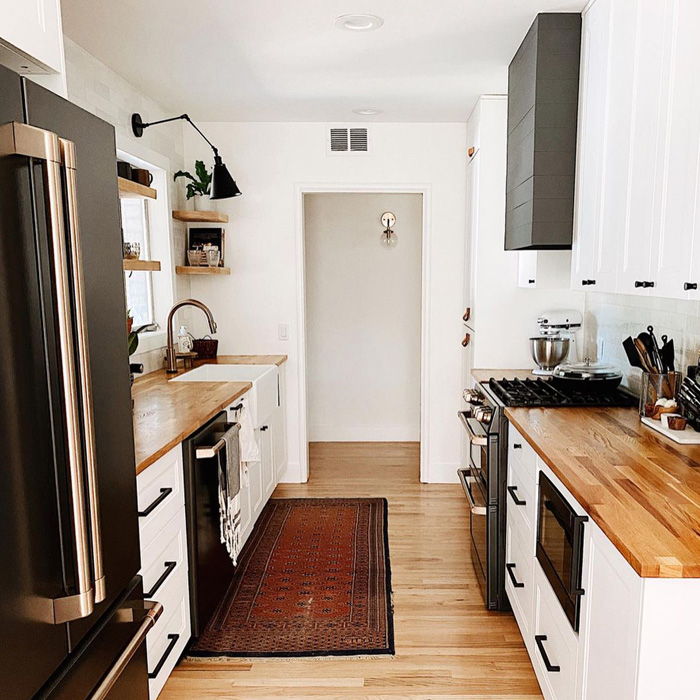
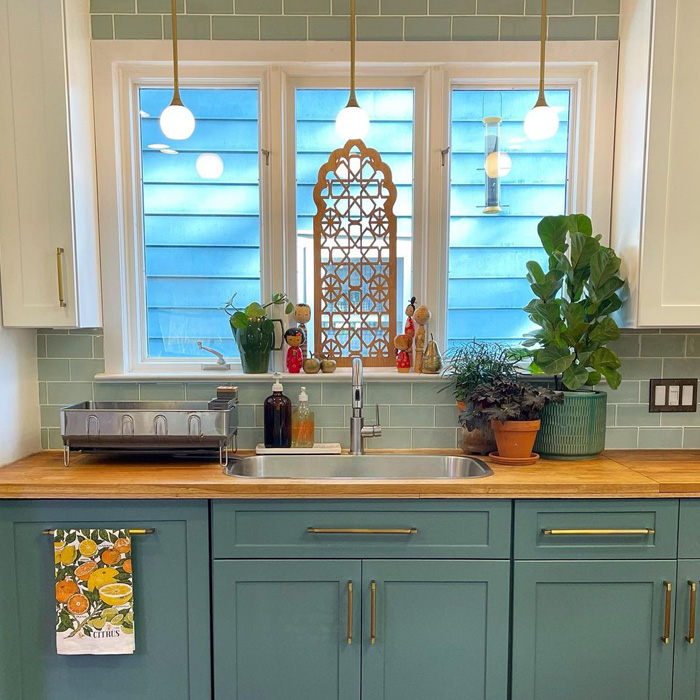
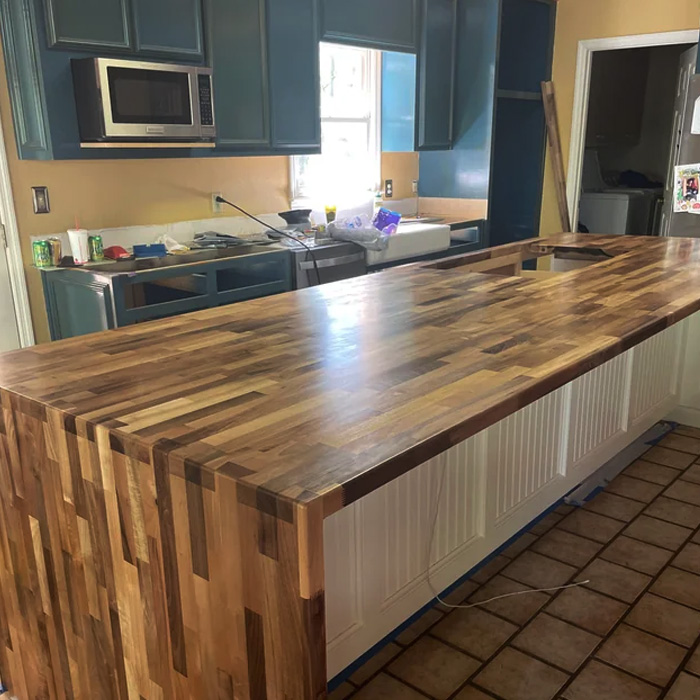
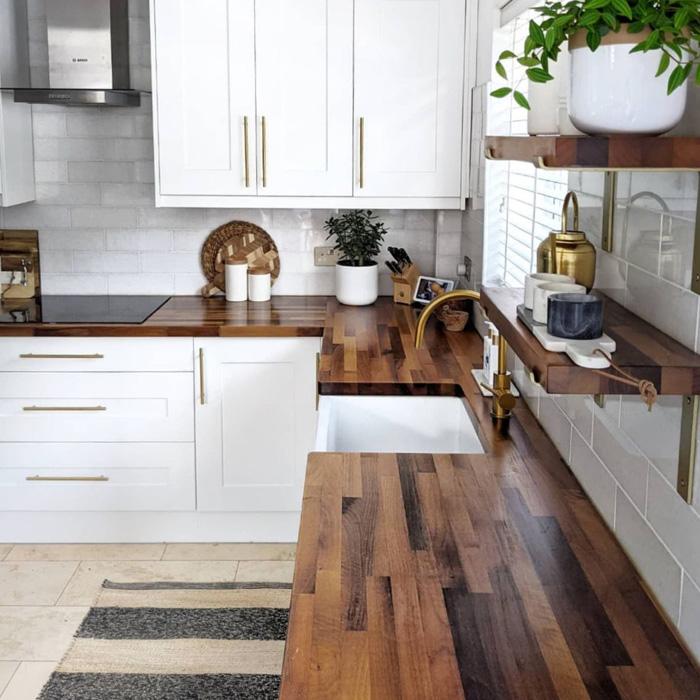
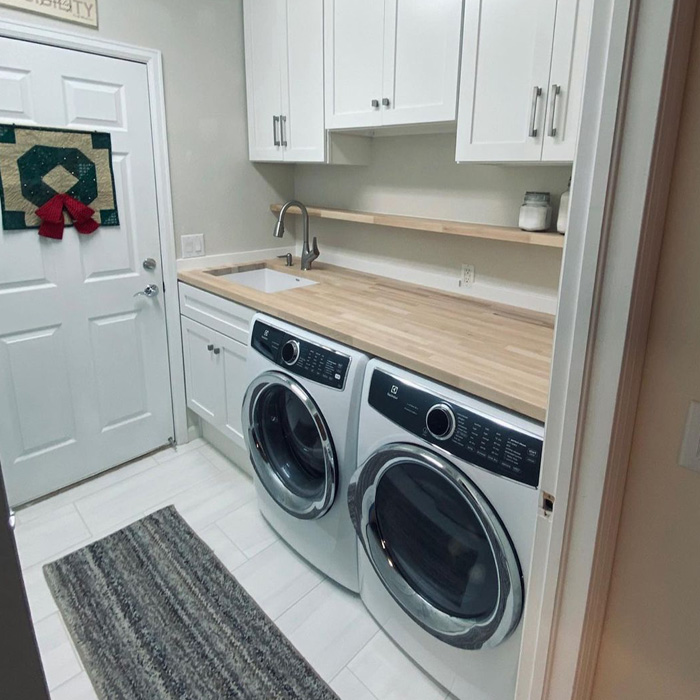
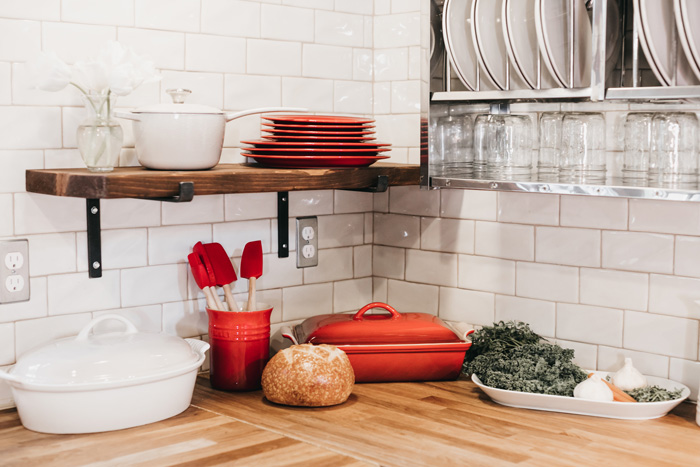












































7
1